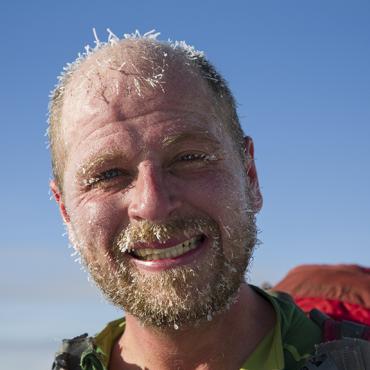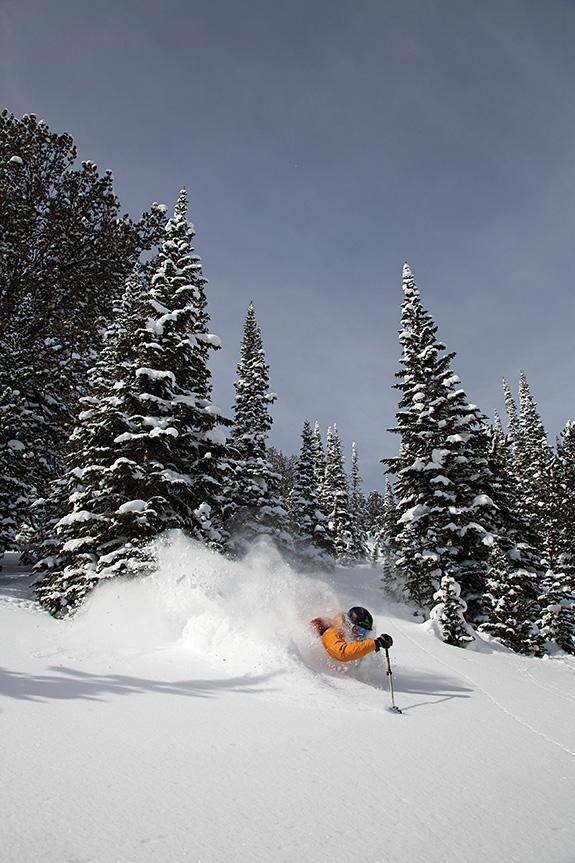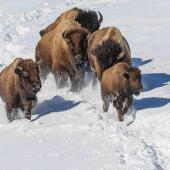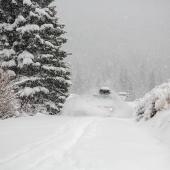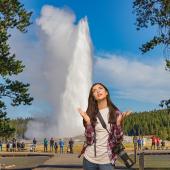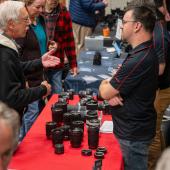One Turn at a Time
Nailing the powder shot.
Two feet of fresh powder? Check. Bluebird? Check. Directional morning light? Check. A protected slope with good stability and minimal objective hazards? Check. It’s go time.
For me, the perfect powder photo boils down to that moment of bliss when the worries of everyday life don’t exist: a moment of pure joy when all I’m thinking about is the next turn. If I can showcase that in a photo and get a viewer to relive one of those moments, that’s enough for me.
With that said, there are a lot of factors at play when it comes to nailing a dynamic powder photo. Light, camera perspective, camera/focus mode, lens size, aperture, shutter speed, the subject’s body position, how the subject and snow mingle with light and shadow, etc. Backlit photos can make for fantastic powder plumes, but can also make the subject dark and un-recognizable. Is the subject suitably concealed by the plume of snow? Only a hand? Too much. Beer-gut showing? Not enough. Arm, pole plant, face shot—bingo! Since you only get one chance at a specific photo of untracked, unblemished powder, keeping all of these variables in mind and setting yourself up in the right position will enhance your success rate.
In addition to those variables, a stellar action photo often relies on concise communication between the lensman and the subject. Sometimes the communication gets tedious—just ask most of my friends—so it’s imperative to work quickly and hugely beneficial to know your subject and for them to know what you mean when you say, “turn left,” as in your left, not mine. Knowing your camera and lens combo is also a major factor. Pre-focusing works great when you’re using a wide-angle lens or when you’re farther away from the subject, whereas continuous-focus modes will generally have a better success rate for tight, in-your-face powder photos—as long as the camera-lens combo has the capability to shift focus as rapidly as the skier approaches.
For this particular photo, I had a good idea of the composition I wanted and—due to years of experience working together—I was also confident that the subject would end up in the right spot. I used continuous-focus mode with only one tiny auto-focus target highlighted (of the 60 available) in the exact spot I wanted the subject in the composition on the grid in my viewfinder. As he descended and picked up speed, I tracked him, keeping the target on him so the camera would pick up his movement. Then in one split second, the camera stopped, he came into the money spot, initiated his turn, and bam—it was over in the blink of an eye. On to the next blissful turn…
Word to the Wise
Don’t let Kodak courage get the best of you. As many of us turn to the backcountry in order to attain untracked photos, we need to remember that group safety comes first, period. In the past, my subjects and I threw caution to the wind when it came to setting up for ski photos, which led to way too many close calls. Assessment of the snowpack and terrain are crucial when setting up photos, especially when fresh powder’s involved. Even a small sluff from above can knock someone off his feet and into danger. Or, something small, like accidentally burying loose equipment, can be serious when your group is hours from safety.
O/B photo editor Simon Peterson worked for Backcountry magazine before becoming a freelance photographer.

